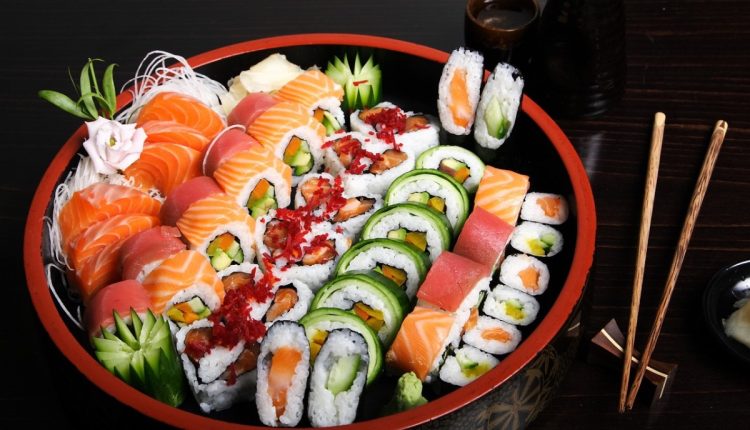Few dishes in the world carry the elegance, precision, and cultural depth of Japanese sushi. What began as a method of preserving fish centuries ago has evolved into a global culinary phenomenon that blends craftsmanship, flavor, and heritage in every bite. Today, sushi is not just a dish—it is an experience. Let’s take a deep dive into the fascinating world of sushi, its origins, types, cultural significance, and its growing influence worldwide.
A Bite of History
Sushi’s roots trace back to Southeast Asia, where fermented rice was used to preserve fish. This early form, known as narezushi, made its way to Japan in the 8th century. Over time, Japanese cooks adapted the dish, removing the fermentation process and creating what we know today as edomae sushi, which became popular in Tokyo (formerly Edo) during the Edo period (1603–1868). It was the Japanese answer to fast food—quick, fresh, and flavorful.
What Makes Sushi… Sushi?
At its core, sushi is a harmonious blend of vinegared rice (shari) and toppings or fillings (neta), often involving raw or cooked seafood, vegetables, and seaweed. But not all sushi is raw fish—that’s a common misconception. Sushi comes in many forms, and each variety reflects different culinary philosophies.
Popular Types of Sushi
Nigiri
The classic image of sushi: hand-pressed rice topped with slices of fish or seafood. Often served with a touch of wasabi and sometimes wrapped with seaweed.
Maki (Rolls)
Rice and fillings wrapped in seaweed and sliced into bite-sized pieces. Variations include futomaki (thick rolls), hosomaki (thin rolls), and uramaki (inside-out rolls).
Sashimi
Though not technically sushi (no rice), sashimi consists of expertly sliced raw fish or meat, appreciated for its purity and texture.
Temaki
Hand-rolled cones of seaweed filled with rice, fish, and vegetables. Great for casual sushi enjoyment.
Chirashi
A colorful “scattered” bowl of sushi rice topped with various sashimi and garnishes—an artistic and wholesome dish.
The Art of Sushi Making
Creating sushi is far more than assembling ingredients—it’s a discipline. Traditional sushi chefs (itamae) undergo years of training to master techniques like fish slicing, rice preparation, and balance of flavors.
Even the rice itself is treated with reverence. Sushi rice must have the perfect texture—slightly sticky but not mushy—and be seasoned delicately with vinegar, sugar, and salt. The fish is selected with utmost care, often sourced fresh from local or international markets.
Every movement of a sushi chef is deliberate, reflecting Japanese values of precision, patience, and respect.
Sushi Etiquette: Do’s and Don’ts
Sushi dining has its own set of etiquettes:
-
Use your hands (yes, it’s perfectly acceptable).
-
Dip the fish side, not the rice side, into soy sauce.
-
Eat nigiri in one bite to savor its balance.
-
Cleanse your palate with a slice of pickled ginger (gari) between bites.
-
Avoid mixing wasabi into soy sauce, especially in traditional settings—it can be seen as disrespectful to the chef’s seasoning.
Sushi and Japanese Culture
Sushi embodies more than flavor—it reflects Japanese principles of seasonality (shun), minimalism, and harmony. In many Japanese homes and celebrations, sushi is a symbol of joy and togetherness.
Seasonal ingredients play a big role. For instance, spring might see delicate clams and snapper, while autumn brings rich mackerel and mushrooms.
Sushi’s Global Journey
From Tokyo’s famed sushi counters to fusion restaurants in New York, London, and Mumbai, sushi has become a global ambassador of Japanese cuisine. Modern takes, like California rolls or tempura maki, adapt sushi to local palates, though purists often prefer the traditional forms.
Sushi restaurants now range from high-end omakase experiences—where the chef curates each course—to budget-friendly conveyor belt sushi (kaitenzushi), making sushi accessible to all.
Sushi in the Modern Day
Today, sushi is not just a dish—it’s a lifestyle. From Instagrammable sushi platters to sustainable sushi movements focusing on ocean-friendly sourcing, it continues to evolve.
Plant-based sushi is also on the rise, catering to vegetarian and vegan preferences with ingredients like avocado, tofu, pickled daikon, and even eggplant “eel.”
Conclusion: A Bite of Zen
Sushi is more than raw fish and rice—it’s a story of tradition, artistry, and evolution. Whether you’re indulging in a tuna nigiri at a high-end Tokyo restaurant or grabbing a spicy salmon roll from your local spot, sushi connects you to centuries of culinary craftsmanship.
So the next time you pick up your chopsticks, remember: you’re not just eating—you’re participating in a rich, flavorful tradition that continues to captivate the world.


Comments are closed.